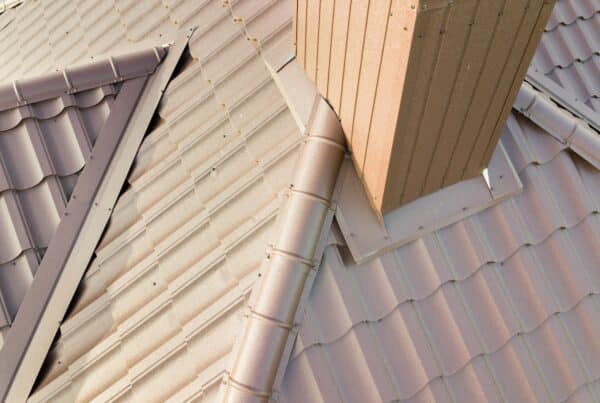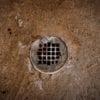
It can be easy to take your roof for granted, but neglecting it can lead to serious failures and expensive repairs – it’s your home’s first defense! From shingles to underlayment, each piece plays a role in keeping your roof functional. Understanding them and how to keep everything in ship shape will make your roof’s job and your life much easier.
So, in this article, we’ll identify key parts of a roof, explain their functions, and share the best ways to keep them in good condition. We’ll also make sure you always know when an expert’s opinion is necessary.
Why Roof Maintenance Matters
Keeping a finger on the pulse of your roof is one of the best ways to protect the rest of your home. Regular maintenance and inspections prevent costly repairs, ensure energy efficiency, and maintain value.
In fact, a well-maintained roof can last up to twice as long as a neglected one. Moreover, “up to 40% of all building-related problems can be attributed to water infiltration through the roof system”.
In essence, nobody loves performing roof upkeep (well, maybe some people do) – but investing your attention in it now is doing you a big favor in the future. Here are some of the biggest spots to keep an eye on and how to show them the best TLC!

Vital Roof Parts and Their Care
General care gets a bit less daunting when you break it down into the most important chunks. Let’s dive into some primary parts and the best ways to keep them healthy.
Shingles
Shingles are the most visible part of your roof, acting as the first barrier against the elements. They protect your home from rain, wind, snow, and UV rays.
To keep your shingles in good shape, it’s important to:
- Regularly inspect them for signs of wear and tear, such as curling, cracking, or missing pieces. Catching and addressing these issues early can prevent more serious problems down the line.
- Replace any damaged or missing shingles promptly to avoid leaks and water damage to your home’s interior.
- Keep them clean and free of debris, such as leaves and branches, which can trap moisture and encourage the growth of algae or moss. This not only looks unsightly but can also degrade your shingles over time.
Decking or Sheathing
Beneath your shingles lies the roof decking or sheathing, which is typically made of plywood or oriented strand board (OSB).
This layer provides a sturdy base for your shingles and helps distribute the weight of any snow or debris evenly across your roof. To maintain the integrity of your decking:
- Keep an eye out for signs of water damage, rot, or sagging, which can indicate a more serious issue with your roof.
- Address any problems quickly to prevent further deterioration and maintain your roof’s structural integrity.
Underlayment
The roof underlayment is a waterproof or water-resistant barrier installed directly onto the decking, underneath the shingles. It serves as an additional layer of protection against leaks and moisture infiltration.
If you notice any damage or wear to your underlayment during routine inspections, it’s crucial to have it replaced as soon as possible to keep your roof watertight and prevent costly repairs.
Flashing
Flashing is the thin metal material used to seal areas of your roof that are particularly vulnerable to leaks, such as around chimneys, vents, skylights, and valleys where two roof slopes meet.
To keep your flashing in good condition:
- Inspect it regularly for signs of rust, gaps, or looseness, as these can allow water to seep into your home.
- Replace any damaged or deteriorated flashing to maintain a waterproof seal and prevent leaks and wood rot.
Ventilation
Proper attic ventilation is essential for regulating temperature and moisture levels in your home, which can extend the life of your roof and prevent issues like ice dams, mold growth, and heat buildup.
A well-designed ventilation system typically includes a combination of ridge vents along the peak of your roof, soffit vents under the eaves, and gable vents on the ends of your roof. To ensure your ventilation system is working effectively:
- Keep all vents clear of blockages and debris, such as leaves and bird nests, to allow for proper airflow.
- Check that your attic has adequate insulation to prevent heat from escaping through the roof in winter and to keep your home cooler in summer.
Gutters and Downspouts
While not technically part of your roof, these are critical in directing water away from your home’s foundation. They’re also keys to preventing damage to your roof and siding.
To keep your gutters and downspouts functioning properly:
- Clean them regularly, especially in the fall and spring, to remove leaves, twigs, and other debris that can cause clogs and overflows.
- Repair any leaks, cracks, or sagging sections to ensure water flows freely and doesn’t back up onto your roof or spill over onto your foundation.

The gutters of a home, where the downspout diverges.
Other Recommended Roof Maintenance
Beyond caring for your roof’s key components, a few additional maintenance tasks can help extend its lifespan and prevent damage. Trimming overhanging tree branches reduces the risk of falling limbs and keeps debris from accumulating on your roof and in your gutters.
In colder climates, regularly removing snow and ensuring proper insulation and ventilation can prevent ice dams from forming and causing leaks. Periodically inspecting your attic for signs of moisture, even insulation distribution, and adequate ventilation can help you identify potential issues before they impact your roof.
Finally, applying a high-quality roof sealant around flashing, vents, and other penetrations maintains a watertight seal and prevents leaks.
When to Call a Professional
Homeowners should feel empowered to keep up with minor roof maintenance themselves! However, there are times when it’s best to seek expert help.
- Major damage: Large holes, widespread shingle damage, or significant water stains on ceilings or walls require professional assessment and repair.
- Persistent leaks: If you can’t locate or fix a leak yourself. A professional roofer can identify the source and provide a lasting solution.
- Complex issues: Structural damage, extensive rot, or other problems beyond your skill level. A trained professional should take a look for safety and correctness.
In general, scheduling annual roof inspections can catch developing problems early. That saves you from more extensive repairs later.
Conclusion
Your roof can act like your home’s bodyguard, and its well-being is crucial. Understanding the most important parts and maintaining them can extend its lifespan and keep your home safe.
If it’s been a while since your roof was inspected or you need an expert’s eyes on existing damages, call our family company, Roofing Ops in Atlanta, GA, and surrounding areas.






